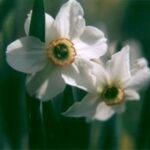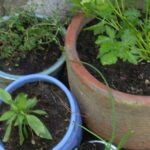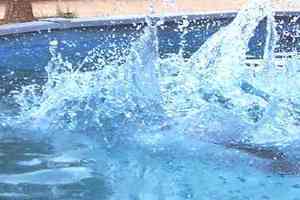Herbs – fragrant, eye-pleasing and a must for culinary pursuits – aren’t just for outdoor gardeners anymore.
In fact, growing herbs indoors is an ideal way to keep a little bit of summer close by during the long gray months of winter. By selecting the right varieties and providing optimum conditions, there’s no reason why you can’t have fresh herbs at your fingertips all year long.
Not only do they smell good and taste terrific, herbs planted in matching windowsill pots can add flair to your kitchen, or any other room, for that matter.
The experts say that the secret is giving herbs what they want – plenty of light (either natural or manmade), the right kind of soil, and the proper amounts of water and fertilizer.
Also important, however, is selecting the right varieties to grow, since not all herbs adapt equally well to the indoor life.
Mint, cilantro, chives, basil and Italian parsley all are recommended. There are varying degrees of success with others, like thyme, rosemary and oregano.
Pick those you use regularly in cooking,” advises California certified nursery professional Kathy Santos, who is assistant merchandising manager for SummerWinds Garden Centers in the San Jose, Calif., area.
Chives are wonderful chopped finely and sprinkled over omelets or chicken dishes; thyme and oregano, of course, are necessities in cooking Italian fare.
Cilantro is a must-have for salsas and Asian dishes, and basil is the main ingredient in pesto. Mints are used in teas and other drinks, and parsley adds interest to sauces, or can be used simply as a garnish.
Those who have these herbs already growing in their yards can lift them and bring them inside; the only caveat here is that some plants might not like the change, and will drop leaves or fail to thrive.
Or you can simply start from scratch by buying plants at nurseries, begging cuttings from friends, or obtaining seeds.
During the winter, seeds may be the easiest way to go, since nurseries may not stock potted herbs this time of year (although some mail-order nurseries may be able to ship them). However, it’s easiest and cheapest to grow your own.
Seed suppliers offer herb seeds year-round, and these can ordered online or through catalogs. There are also cute little herb-growing kits available at garden gift shops or online, which supply not only the pot and the seeds, but also recipes and growing instructions. For instance, the Olive Barn (www.olivebarn.com) offers ready-made trios of herbs – salsa, French and Italian – in pretty glazed pots, complete with matching drip tray.
Renee’s Garden Seeds in Felton has responded to increased demand for indoor-grown herbs by developing compact varieties that thrive inside. One such is its mini-windowbox basil, described as “bonsai basil,” which grows into neat, umbrella-shaped 6- to 8-inch plants.
But larger-growing herbs shouldn’t be shunned for indoor use. Beth Benjamin, horticultural director for Renee’s, even recommends larger herbs like arugula, since “you tend to cut them back when they’re three to four inches tall anyway.”
Herbs need as much sunlight as they can get each day, and if that’s not possible, a grow lamp can be a supplement. Good light helps herbs’ fragrant oils develop, according to Carolyn Villa-Scott, horticultural consultant for Yamagami’s Nursery in Cupertino, Calif.: “That’s where all the flavor is concentrated … they need a lot of light to keep going.”
However, as Santos of SummerWinds notes, “You’d be surprised how much light comes in the kitchen window. Because the angle of the sun is lower this time of the year, often more light comes in.”
Or, as Benjamin suggests, “If your plants are looking peaked, you can always take them outside for a little extra light.”
Benjamin cautions against using ordinary dirt from the garden in your herb pots. Your herbs will be happiest in potting soil, especially one that has some nutritional content. A liquid plant fertilizer or slow-release fertilizer should also be used once a month.
Many herbs are happy in the same conditions that humans enjoy, Santos said, and do well indoors. Indoor temperatures should be between 70 and 75 degrees, dropping to no lower than 55 degrees at night. Santos recommends rotating the pots a quarter-turn each week for more even growth.
If you can add humidity to the indoor climate, Villa-Scott said your herbs will appreciate it.
Another consideration is water – not too much, and not too little.
Since most herbs come from Mediterranean climates and are naturally drought-resistant, too much water doesn’t agree with them. They also require good drainage so that roots are not left standing in water. Santos says to water herbs thoroughly only when soil in the pots is dry to the touch.
Another advantage of growing herbs indoors during the winter is that you’ll have them ready to plant outside when spring arrives.
Some authorities say to “harden off” indoor plants before putting them in the ground, by leaving them outdoors in a sheltered area for several weeks prior to planting. Others think in sunny California, it’s not necessary. But it’s best to wait until all danger of frost has passed.
Or keep them indoors permanently, if you like, where they’ll always be on duty, ready and waiting to liven up your best dishes and provide a grace note to your home.





